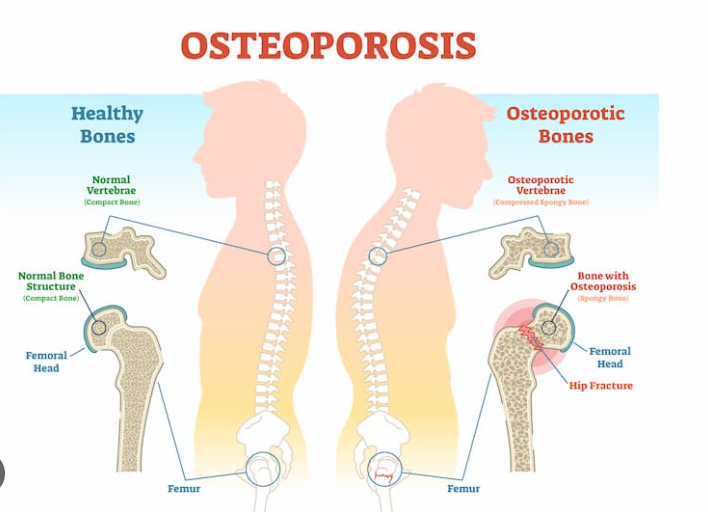Context
-
India has six crore osteoporosis patients, of which 80% are women.
Is osteoporosis considered an age-related disease? What are the current trends?
- A disease that weakens the bones making them thinner and less dense leading to fracture.
- According to the World Health Organization (WHO), 30% of postmenopausal women suffer from osteoporosis.
- It has been reported that around six crore people in India have osteoporosis and 80% of them are women.
- The peak incidence in India occurs 10 – 20 years earlier than in western countries.

What are the causes and symptoms of the disease?
- Many factors are associated with osteoporosis and may increase its risk.
- These are gender, advancing age after menopause, low body mass index (BMI), family history, poor diet, sedentary lifestyle, smoking and alcohol consumption.
- Usually, there are no symptoms in the early stages of osteoporosis.
- But once the bones have been weakened by the disease – back pain, loss of height over time and a stooped posture can occur.
- The worst outcomes of the disease – fractures and chronic pain – are common in both genders. However, women are more vulnerable.
How can we diagnose the presence of the disease?
- Should be suspected in people above 65 years and those who are prone to fractures.
- Dual-energy x-ray absorptiometry (DXA) is the commonly used test to measure bone mineral density.
- It is a quick, painless and noninvasive test using low levels of X-rays.
- The test measures the bone mineral density of the skeleton and at various sites that are prone to fracture, such as the hip and spine.
What are the ways to prevent osteoporosis?
- Proper nutrition and consuming foods and liquids that include calcium, vitamin D and protein can help minimize bone loss and maintain overall health.
- Also, a healthy lifestyle is important for optimizing bone health.
- Smoking and alcohol intake should be avoided.
- Exercise can also help. Research shows that the best physical activities for bone health include strength training or resistance training.
- However, exercise should not put any sudden or excessive strain on your bones. People with osteoporosis should avoid high-impact exercise.
The disease cannot be cured, but what are the treatment options available to manage it?
- There is no cure for osteoporosis, however, proper treatment can help protect and strengthen the bones.
- Several bisphosphonates can help preserve bone density and strength to treat osteoporosis by slowing down bone loss.
- Calcitonin, a hormone secreted from the thyroid gland, is effective in the treatment of osteoporosis in postmenopausal women who cannot take or tolerate other medications for osteoporosis.
- Selective estrogen receptor modulator (SERM) and tissue-selective estrogen complex (TSEC) are effective.
- They are not estrogen, however, they have estrogen-like effects on some tissues and estrogen-blocking effects on other tissues.
- Also, estrogen and combined estrogen and progestin (hormone therapy) are used to prevent osteoporosis and fractures in postmenopausal women.
- Because of potential side effects, researchers recommend that women use hormone therapy at the lowest dose and for the shortest time only if other medications are not helping.
- It is important to carefully consider the risks and benefits of estrogen and hormone therapy for the treatment of osteoporosis.
- Parathyroid hormone (PTH) is a form of human parathyroid hormone that increases bone mass and is effective in both postmenopausal women and men with osteoporosis who are at high risk of fractures.
Source: New Indian Express
Visit Abhiyan PEDIA (One of the Most Followed / Recommended) for UPSC Revisions: Click Here
IAS Abhiyan is now on Telegram: Click on the Below link to Join our Channels to stay Updated
IAS Abhiyan Official: Click Here to Join
For UPSC Mains Value Edition (Facts, Quotes, Best Practices, Case Studies): Click Here to Join
